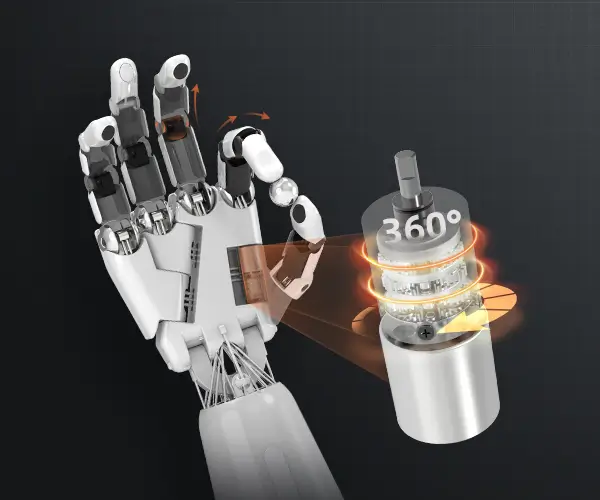If you're diving into the world of robotics or DIY electronics, you're likely familiar with Arduino, a powerful platform that opens the door to endless possibilities. One of the most common components in Arduino projects is the micro servo. It's small, versatile, and easy to control—making it an excellent choice for anyone looking to bring their ideas to life. If you’re wondering how to get started with controlling a 9g micro servo using Arduino, let’s walk through it together.

What Exactly is a 9g Micro Servo?
The 9g micro servo is a compact, lightweight motor often used in small robots, drones, or even remote-controlled cars. It’s called “9g” because of its weight—around 9 grams. Despite its small size, this little servo is surprisingly powerful for its weight, able to rotate between 0° and 180° with ease.
Why Choose a 9g Micro Servo for Arduino Projects?
It’s no secret that the Arduino ecosystem is all about simplicity and accessibility. The 9g micro servo fits perfectly into this world. Whether you're controlling a robotic arm, building a simple automated system, or adding movement to a model, the servo provides an efficient, low-cost way to add precision and functionality to your projects.
Now, let’s break down how to control this tiny yet powerful motor using your Arduino board.
Getting Started: The Basics of Arduino and the Servo
To use the 9g micro servo with Arduino, you’ll need just a few simple components:
- Arduino board (like the Arduino Uno)
- 9g micro servo
- Jumper wires
- Breadboard (optional, but handy)
Once you have everything set up, you'll wire the servo to the Arduino:
- Power pin (usually red) goes to the 5V pin on the Arduino.
- Ground pin (black or brown) connects to the GND pin.
- Signal pin (yellow or white) plugs into a PWM pin (like pin 9).
Once that’s done, you’re ready to dive into the code.
Writing the Code for Your Servo
Here’s a simple example of how to get your servo moving with a few lines of code. It’s all about telling the servo which angle you want it to turn to:
#include <Servo.h>
Servo myServo;
void setup() {
myServo.attach(9); // Pin 9 for the servo
}
void loop() {
myServo.write(0); // Move to 0 degrees
delay(1000); // Wait for 1 second
myServo.write(90); // Move to 90 degrees
delay(1000); // Wait for 1 second
myServo.write(180); // Move to 180 degrees
delay(1000); // Wait for 1 second
}
This simple code will make your servo sweep between 0° and 180° in 90° increments. You can adjust the angles to suit your project needs.
What Makes KPOWER's Micro Servo Stand Out?
When it comes to choosing the right micro servo, KPOWER offers a top-notch option. These servos are known for their reliability and durability. They come pre-calibrated, which means they’re ready to go right out of the box—no complicated setup or adjustments needed.
Moreover, KPOWER’s 9g micro servo is designed to handle continuous use without overheating, making it perfect for long-term projects where reliability is key. Whether you’re prototyping, building a robot, or working on a model, you can trust KPOWER to provide consistent performance.
A Few Tips for Smooth Operation
When working with servos, there are a few things to keep in mind:
- Power Supply: While the Arduino can provide power, the servo may sometimes require a separate power source if you're running multiple servos or more complex systems.
- Delays Matter: The servo needs time to reach its target angle. Too little delay in the code can cause erratic behavior.
- Avoid Overload: Don't push the servo to its limits by forcing it beyond the 180° range. This can wear out the motor quickly.
In Conclusion
The 9g micro servo is a perfect companion for anyone working with Arduino, and when paired with KPOWER’s reliable servos, you can be sure of smooth, efficient movement in your projects. Whether you're creating a robot, adding automation to a design, or just experimenting, these little motors pack a punch, making them a go-to choice for hobbyists and creators alike.
If you're ready to take your Arduino projects to the next level, don't overlook the power of the micro servo. You might just find that these small components can open up a world of creative possibilities.
Kpower has delivered professional drive system solutions to over 500 enterprise clients globally with products covering various fields such as Smart Home Systems, Automatic Electronics, Robotics, Precision Agriculture, Drones, and Industrial Automation.




































